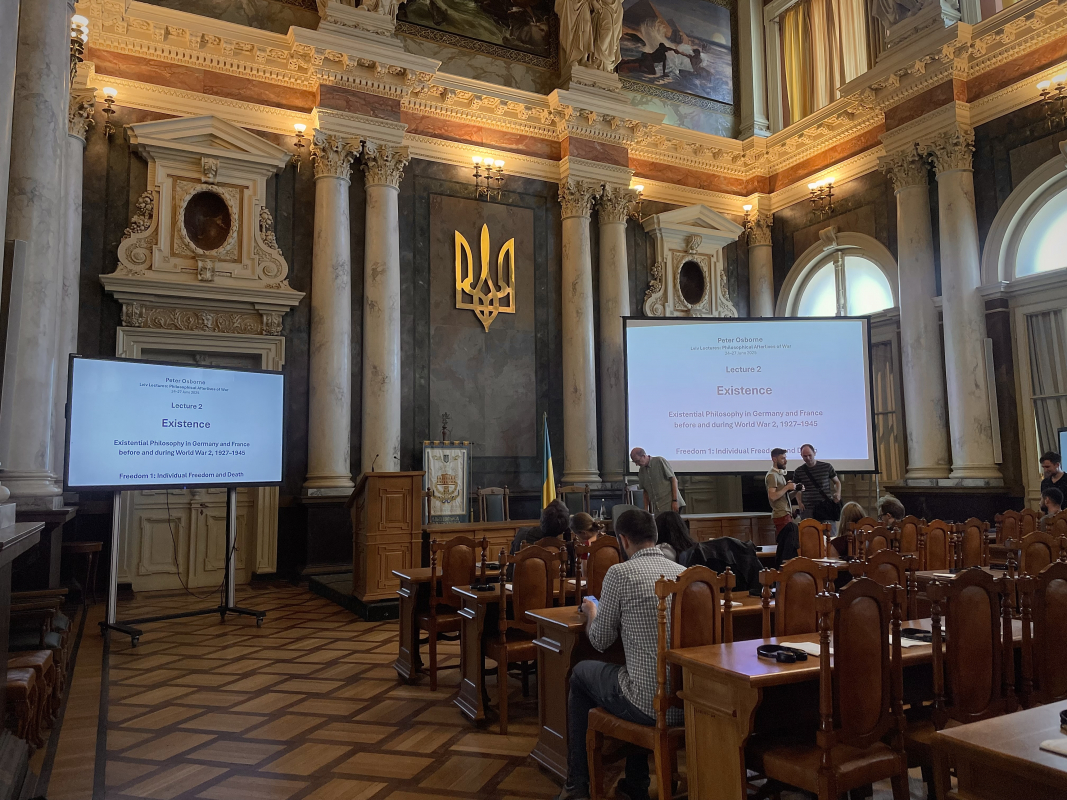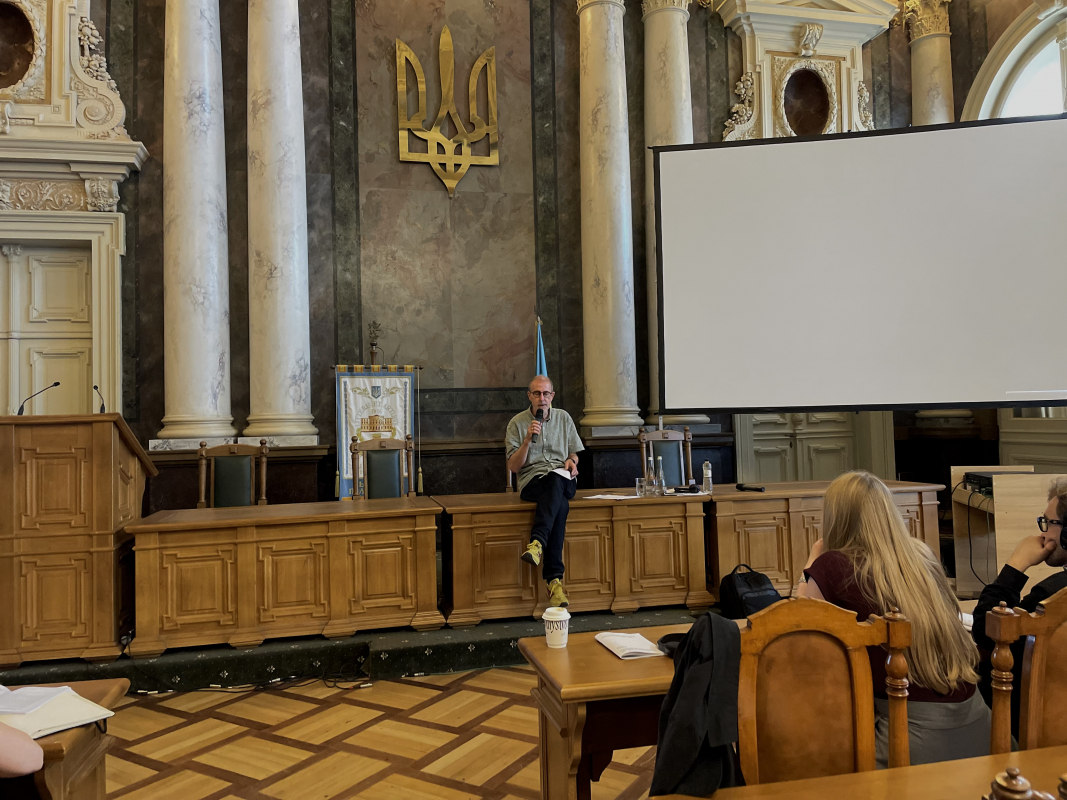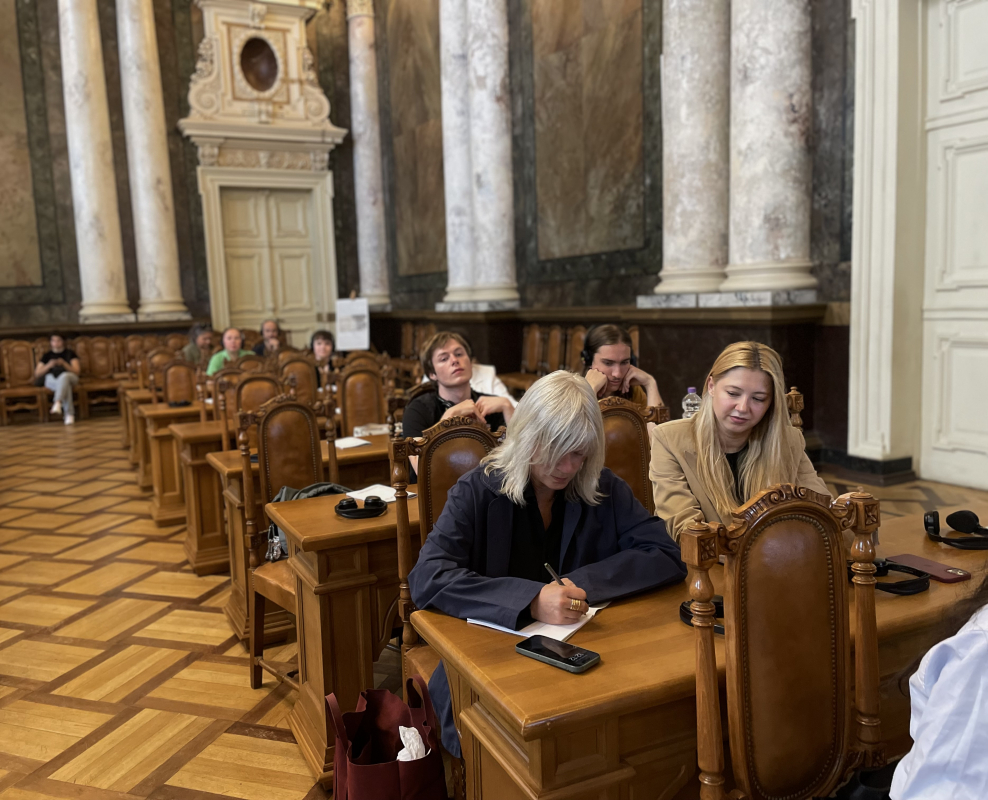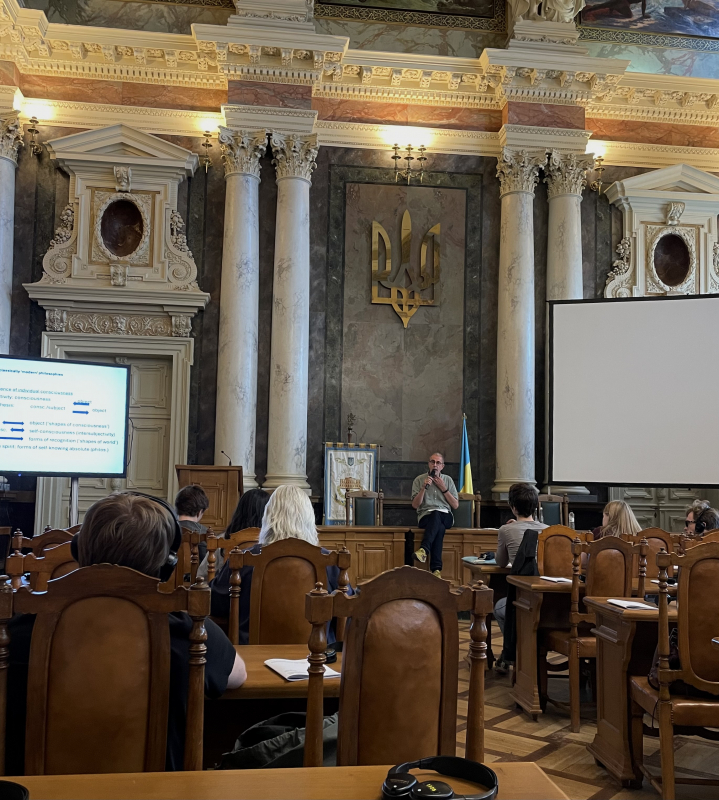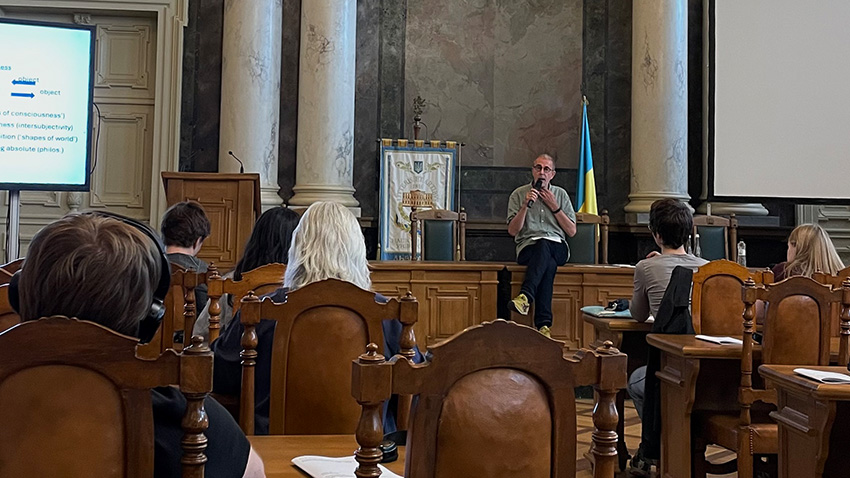Peter Osborne, a lecturer, professor of modern European philosophy and founder of the Centre for Research in Modern European Philosophy (CRMEP) at Kingston University, London, visited Lviv Polytechnic.
From Tuesday, 24 June, to Friday, 27 June, he conducted lectures dedicated to existential philosophy in Germany and France in the period 1927–1945, particularly in the context of the Second World War.
One of the topics of the lectures was Martin Heidegger, a German philosopher (1889–1976) who is considered one of the most influential thinkers of the twentieth century. In his main work, Being and Time (1927), he posed a fundamental question: what does it mean to be?
Heidegger argued that Western philosophy, starting with Plato, had forgotten about the true understanding of existence, focusing only on the essentials – individual things and objects. In order to return to this forgotten question, he resorts to the analysis of human existence – the way we live, think and perceive the world. This is how Heidegger came up with a key concept that became central to his philosophy and reflects his way of thinking. It is Dasein and temporal existence as its fundamental structure.
What is it?
Dasein is a combination of two German words: «da» and «sein». Literally, it means «to be there». However, Heidegger categorically rejected such a literal interpretation in his discourse. In his practice, this word has a deep, extensive philosophical explanation.
We adjust our lives ourselves – there is no fate that would shackle us with the illusion of a possible choice. We exist in search of meaning in a world where there are no ready-made answers, where the cosmos has nothing written in advance, which is what is considered to be dasein, human existence. This is in contrast to the ancient idea of fitting into the cosmos. Instead, modern man must choose his own existential essence. This leads to the authenticity and inauthenticity of being.
